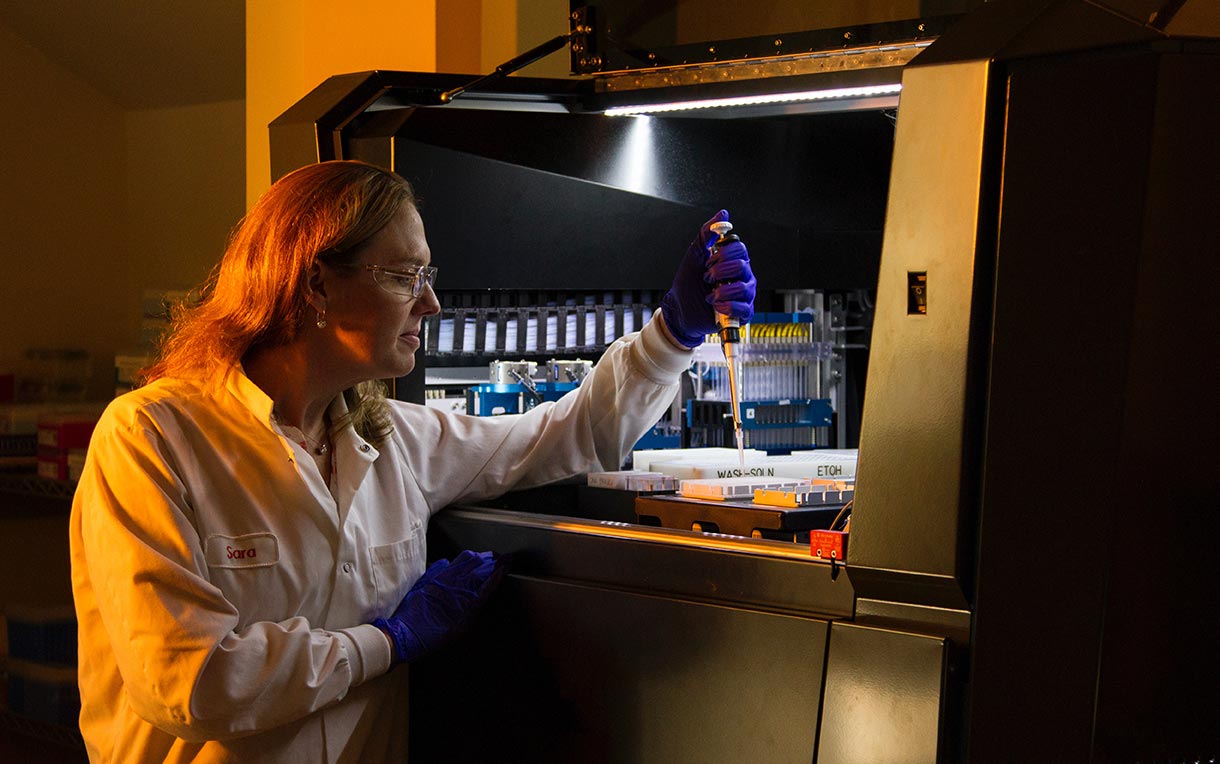

Cancers of epithelial tissues (see carcinoma) which also have glandular origin or glandular characteristics such as the ability to secrete substances.
Slow growing tumor arising from cells of the neuroendocrine system. These tumors are associated with carcinoid syndrome. Most commonly found in the gastrointestinal tract.
Symptoms which arise from secretion of hormones (mainly serotonin) from carcinoid tumors. Symptoms do not occur until the tumor has metastasized to the liver, and include flushing, diarrhea, wheezing, and in later stages, cardiomyopathy.
The most common cancer type found in humans which arises in tissues lining the inner or outer surfaces of the body. Mainly epithelial tissues are involved in this type of cancer.
Carcinoembryonic Antigen. A tumor marker associated with many cancers, especially liver, intestinal, and pancreatic.
Chromogranin A. A blood serum marker present in human neuroendocrine tissue.
Circulating tumor cell. These are obtained via a blood sample and are the cells that are tested.
Neuroendocrine cells found in epithelia lining the respiratory and GI tract. Contain ~90% of the body’s stored serotonin.
Nuclear imaging performed after an injection of the radionucleotide 68Gallium.
A tumor in the upper GI that secretes excess quantities of Gastrin, leading to the ulceration of the GI tract.
Gastroenteropancreatic neuroendocrine tumors.
A method used to present an assessment and recording of the severity of a condition. Grading scales are usually organized in five stages of increasing severity, from grade 0 (normal) to grade 4 (severe).
A metabolite of Serotonin that is excreted via the urine. It is used to determine the levels of Serotonin being secreted by NETs. This test requires a 24hr urine collection with dietary restrictions.
Hormones are chemical signals produced by a cell or a group of cells, and are released into the bloodstream. Hormones generally affect a wide variety of cells from different targets. NETs secrete hormones.
Disease with minimal or slow growth.
A nuclear antigen utilized to provide a proliferation (cell/tumor growth) index utilizing a tissue sample.
A somatostatin analog that suppresses neuroendocrine tumor secretory activity.
Abnormal tissue caused by disease or trauma.
Abbreviation for multiple endocrine neoplasia type 1.
Spreading of disease from the primary location to other parts of the body.
Protein kinase that regulates cell growth, cell proliferation, cell motility, cell survival, protein synthesis, and transcription.
Synonym for tumor. An abnormal mass due to abnormal growth and division of cells.
Neuroendocrine Tumor. Tumors arising from neuroendocrine cells, found in the nervous and endocrine systems. They are most commonly found in the small intestine, rectum, stomach, and lungs.
Neuroendocrine Tumor PCT Test. A gene-based blood test used to identify neuroendocrine tumors. The test is highly sensitive for NETs and significantly more accurate than assays for chromogranin A.
Pertaining to neural and endocrine influence, and particularly to the interaction between the nervous and endocrine systems.
Nothing by mouth (fasting.)
A somatostatin analog that suppresses neuroendocrine tumor secretory activity.
Non-curative treatment aimed at improving the quality of life remaining.
A small fragment peptide derived from Chromogranin A. It is measured in the serum and functions as a marker similar to CgA.
Polymerase Chain Reaction, amplification of DNA and quantitative gene analysis.
Positron Emission Tomography which detects tissue uptake of radionucleotide.
Peptide Receptor Radionuclide Therapy.
A neurotransmitter. 90% of the body’s store is located in EC Cells in the GI tract where it is used to regulate intestinal movement. It is also taken up by platelets in the blood, where it acts as a vasoconstrictor (narrowing of blood vessels) SRS (Somatostatin receptor scintigraphy): Imaging utilized to localize NETs; e.g. Octreosca.
A system for describing the exact location, size, and extent of spread of a malignant tumor, used to plan treatment and predict prognosis.
An endocrine tumor, usually originating in the pancreas, which produces a vasoactive intestinal polypeptide believed to cause profound cardiovascular and electrolyte changes with hypotension, watery diarrhea, hypokalemia, and dehydration.